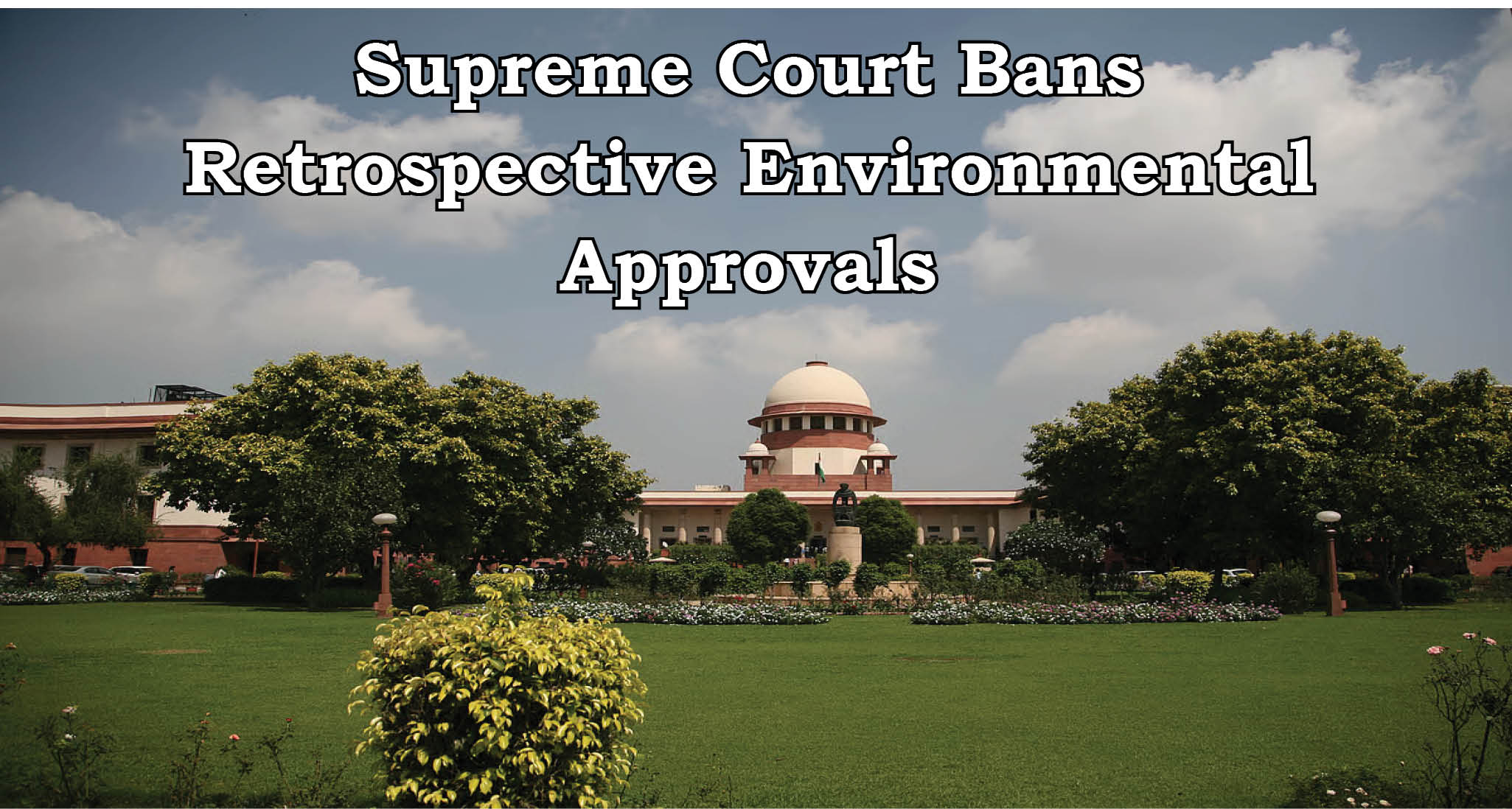Introduction
On May 16, 2025, the Supreme Court of India struck down a 2017 notification from the Ministry of Environment, Forest and Climate Change (MoEF&CC). This notification allowed industries to apply for environmental clearances after starting operations, which is called ex-post facto clearance. The Court also invalidated a 2021 office memorandum (OM) that created a Standard Operating Procedure (SOP) to manage such clearances. It ruled that the government cannot issue similar notifications in the future, calling the practice illegal and unconstitutional.
About Environmental Impact Assessment (EIA):
The Environmental Impact Assessment (EIA), notified under the Environment (Protection) Act, 1986, is a study that evaluates how a proposed project may affect the environment. It helps the government decide whether to approve, reject, or modify a project. According to this, project developers must get environmental clearance before starting any construction or operations.
The EIA process includes
· Screening (to check if clearance is needed),
· Scoping (setting the terms for assessment),
· Impact Analysis,
· Mitigation planning, and
· Public Hearing based on a draft report.
· Decision making
Under the 2006 EIA rules, projects are classified as Category A (cleared by the central ministry) or Category B (cleared by state authorities). Category B is further split into B1 (needs EIA) and B2 (exempted).
· Rapid EIA collects one-season data, while comprehensive EIA uses data from all four seasons.
· The Environment Management Plan (EMP) ensures safe execution of projects, while the Environmental Supplemental Plan (ESP) allows violators to continue operations after paying penalties and agreeing to eco-friendly activities not required by law.
EIA Notification and the 2017 Amendment:
- In 2017, the Ministry of Environment, Forest and Climate Change (MoEF&CC) issued a notification that created a six-month “one-time amnesty window.” This allowed project developers who had already started work without clearance, expanded production beyond allowed limits, or changed their products without approval to apply for environmental clearance after the fact. The Centre said this was to bring such violators under legal control and make sure they pay for cleaning up the damage, so they don’t gain economically from breaking rules.
- The 2017 notification also required that all such violation cases be reviewed by a national-level committee. However, the project had to be allowed at the site for it to proceed.
- To make the process clearer, the Centre issued an Office Memorandum (OM) in July 2021. This laid down a Standard Operating Procedure (SOP) for identifying and handling post-facto clearance applications. This step came after orders from the National Green Tribunal (NGT).
- An Expert Appraisal Committee, led by Dr. S. R. Wate (former director of NEERI), met 47 times between 2017 and 2021 and reviewed more than 100 cases of violations.
The Supreme Court's Verdict: Constitutional and Legal Violations:
1. Violation of Article 21 – Right to a Clean and Healthy Environment
The court reiterated that Article 21 of the Constitution encompasses the right to a pollution-free environment, as previously held in a long line of jurisprudence. It held that post-facto clearances infringe upon this right by regularising environmental harm already caused.
2. Violation of Article 14 – Equality Before Law
The policy was seen as arbitrary and discriminatory, favoring violators over compliant project developers. The court asserted that individuals and corporations who deliberately bypass legal provisions should not be given the opportunity to legitimize their actions retrospectively.
3. Breach of the Centre’s Undertaking
The Court noted that the Centre had earlier committed before the Madras High Court that the 2017 notification was a one-time measure. The continuation of the regime through the 2021 OM amounted to a breach of that assurance.
4. Contravention of Past Judicial Precedents
The Court cited two key judgments:
· Common Cause v. Union of India (2017)
· Alembic Pharmaceuticals v. Rohit Prajapati (2020)
In the Alembic case, a bench led by Justice D.Y. Chandrachud had held that ex-post facto clearances are anathema to environmental jurisprudence and undermine the preventive ethos of the EIA regime.
Court’s Observations and Criticisms:
· The court observed that the Centre’s rationale of remediation did not justify undermining prior scrutiny, which is the backbone of the EIA process.
· It criticized the Centre for “craftily drafting” the SOP and intentionally avoiding the term “ex-post facto”, while effectively permitting the same.
· It questioned whether economic development should come at the cost of irreversible environmental damage.
· The bench also pointed out severe air pollution in cities like Delhi as an example of the grave consequences of unchecked environmental violations.
Implications of the Judgment:
1. Legal Finality on Ex-Post Facto Clearances
The verdict puts a definitive end to the Centre’s efforts to institutionalize post-facto environmental regularisation. The court categorically restrained the government from issuing any future notifications or office orders enabling such clearances.
2. Upholding the Preventive Principle of Environmental Law
The judgment reinforces that environmental law must be anticipatory and preventive, not remedial after the fact. Projects must conduct impact assessments before operations begin.
3. Impacts on Existing Projects
Over 100 projects that benefitted from the 2017-2021 amnesty regime now face legal uncertainty. The government may need to reassess these projects and impose penalties or revoke operations, depending on further judicial and administrative directions.
4. Strengthening Environmental Governance
The ruling is a reminder for regulatory bodies and policymakers to prioritize environmental protection over economic expediency and adhere strictly to constitutional obligations.
Conclusion:
The Supreme Court's judgment on post-facto environmental clearances is a landmark affirmation of the constitutional right to a clean and safe environment. It strikes at the heart of a regulatory culture that prioritizes short-term economic gains over long-term ecological security. By disallowing retrospective regularisation of environmental violations, the Court has upheld the rule of law, intergenerational justice, and the integrity of the EIA process.
| Main question: Environmental governance must not be sacrificed for short-term economic expediency. Discuss this statement in the context of the Supreme Court’s observation on Delhi’s pollution and its broader message to policymakers. |







